
 WELCOME TO THE ASOR BLOG
WELCOME TO THE ASOR BLOG
The American Schools of Oriental Research (ASOR) is the preeminent society for individuals interested in the archaeology of the eastern Mediterranean and the Biblical Lands. This blog is intended to facilitate ASOR’s mission “to initiate, encourage and support research into, and public understanding of, the cultures and history of the Near East from the earliest times.”
Digging Deep at Jezreel
By Andrea Creel, University of California, Berkeley, 2016 Carol and Eric Meyers Excavation Fellowship Recipient
A lot of things happen on a dig. Most of time, these are things you never expect. This is all the more so when you’re digging from topsoil. This year, I had the privilege of returning to the field with the Jezreel Expedition. As in previous seasons, we started excavating from topsoil with almost no idea of what we might find!
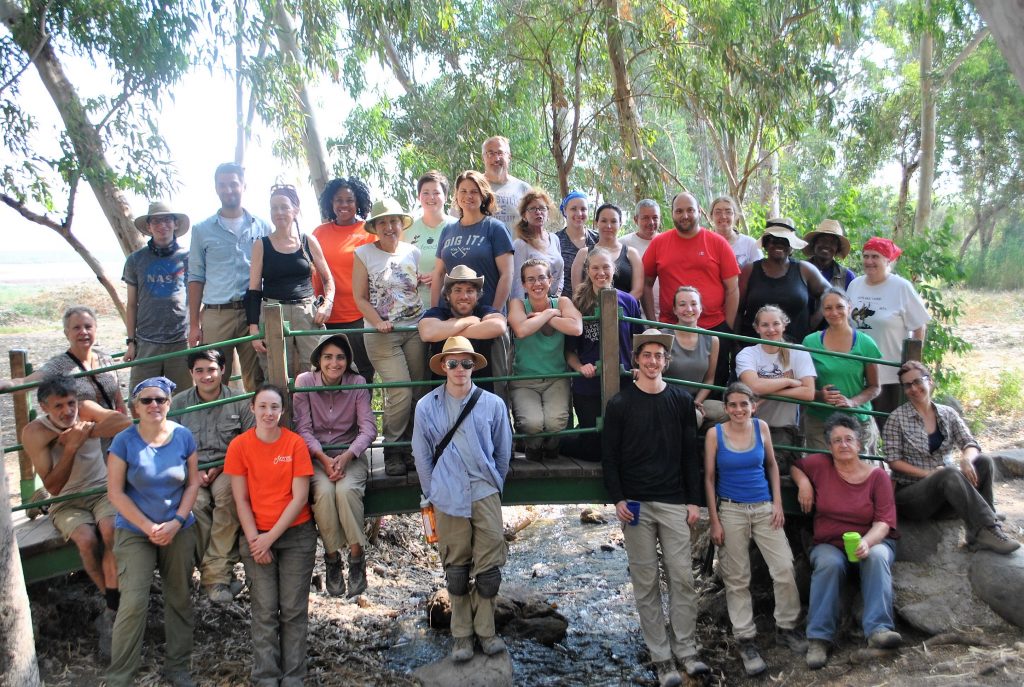
Team Jezreel! (Courtesy of the Jezreel Expedition)
Yet, there has been relatively little excavation at Jezreel, save for expeditions on the upper tel by archaeologists with the Israel Antiquities Authority in the late 1980s and archaeologists from Tel Aviv University and the British School of Archaeology in Jerusalem in the 1990s. These excavations uncovered the remains of a monumental fortification system from the 9th-8th centuries BCE, perhaps associated with the kings of ancient Israel. This, in and of itself, is an amazing find. However, very little is known about the greater area of Jezreel or its long settlement history.The Jezreel Expedition, sponsored by the University of Haifa and the University of Evansville (UE), explores the ancient settlement of Jezreel, 16 kilometers (about 10 miles) east of the well-known site of Megiddo. Jezreel lies near an ancient roadway that linked Egypt to Syria. This road served as a major trade and military route and the area became the site of settlements (and battles!) from antiquity to the modern era. The greater area of Jezreel includes an upper settlement on a natural hill (Tel Jezreel), a lower settlement near a natural spring (Tel Ein Jezreel), a possible settlement near the modern-day Kibbutz Yizreel, and various roads, caves, tombs, and agricultural installations. Many people may be familiar with Jezreel from the Hebrew Bible, where it is mentioned often (most notably in the story of Naboth’s Vineyard in I Kings 21). The site also appears in a later text from the 4th century CE as a major strategic waypoint and features the visible remains of a fortified tower built by the Crusaders.
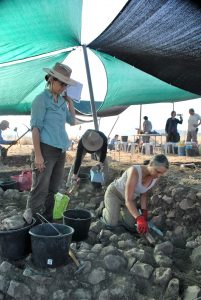
Mulling over stone debris (Courtesy of the Jezreel Expedition)
In 2012, the Jezreel Expedition, co-directed by Norma Franklin and Jennie Ebeling, sought to rectify the situation and began exploring the great unknown that is Jezreel! Since the lower tel near the spring (Tel Ein Jezreel) had never been excavated, the Jezreel Expedition focuses most of its efforts on this area. These excavations are revealing an extensive settlement from the Early Bronze Age (ca. 3300–2300 BCE), as well as evidence for activity in the Neolithic Period, Iron Age, Roman, Byzantine, and Crusader Periods and continuing into modern times. I joined the team in 2014 when we began excavations near an ancient path that connected the spring to the upper tel. In the two seasons that we excavated on either side of this path, we started from topsoil and hit bedrock in only four weeks!
This year, we moved the main excavation further up the slope, hoping for some more depth and better preserved remains. Supervised by Noga Blockman and Field Director Ian Cipin, we opened five new 5 x 5 meter squares. I supervised a square on the northern edge of this area. My team shifted over the course of the excavation, but at one time or another included Kayla Carico, Robin La Rosa Hannig, Michael Koletsos, Isaac Rainey, and Jarrid Thelen. Our square featured part of an oval depression visible in the topsoil. We wondered if it might be a pit of some sort, maybe even a foxhole! However, once we began excavating, we did not see the edges of a pit. Rather, we found some very eroded walls around the depression and the materials from those walls slumped into the depression. It appears that the depression was formerly the corner of some sort of room. Unfortunately, these materials were so close to the surface that the elements as well as later human and animal activities make it unlikely that we’ll be able to say much more about these features.
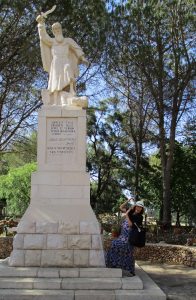
Smoted by Elijah!
Our square also featured several robber trenches and a large amount of stone debris, likely from a possible wall visible in the southern baulk (side wall) of the square and an emerging ritual space southwest of my square! The finds from inside this space are currently contained in a square higher on the slope, supervised by UE alumna Katie Mickus. The exact arrangement of the ritual area is still unclear, but it likely dates from sometime in the Early Bronze Age. This square also initially featured a large amount of stone debris. However, once this debris was removed, Katie’s team began finding wall fragments, burnt mudbrick, caches of nearly-complete pottery, and artifacts associated with ritual activities. The most impressive of these finds so far is a finely worked basalt standing stone! Standing stones (also known as baetyls, pillars, or maṣṣebôt) are unworked or semi-worked medium to large stones that were set vertically into the ground, either singly or in groups. These artifacts likely represented gods or ancestors or something to house the gods or ancestors. Due to our short excavation season and the complexity of my square, my team joined Katie’s team in the final week of the excavation. This was especially meaningful for me since I specialize in ritual and religion in the ancient Southern Levant, but I’ve never had the opportunity to excavate an actual ritual space!
Fascinating things also began appearing in several other squares this season. The square immediately to the east of my square, supervised by UE alumnus and graduate student at East Carolina University, Tim Smith, featured a constructional fill of densely-packed pottery from the Neolithic to the Roman Periods. This fill was once contained within the robbed-out walls seen in several other squares, including mine. Another square, supervised by UE alumna Morgan Davidson, contained a thick deposit of fallen mudbrick debris from the Early Bronze Age. Meanwhile, Deborah Appler, Professor of Hebrew Bible at Moravian Theological Seminary, and Inbal Samet, doctoral candidate at the University of Haifa, supervised the ongoing excavations of a series of walls lower down the slope. One of these walls belongs to a late Roman/Byzantine building we excavated in 2015. This wall abuts an earlier wall (dating to sometime between the Middle Bronze Age and the Roman period) that may have been a perimeter wall at the possible entrance to the site. A rubbish pit cut into this wall contained sherds of some splendid Crusader Period pottery.
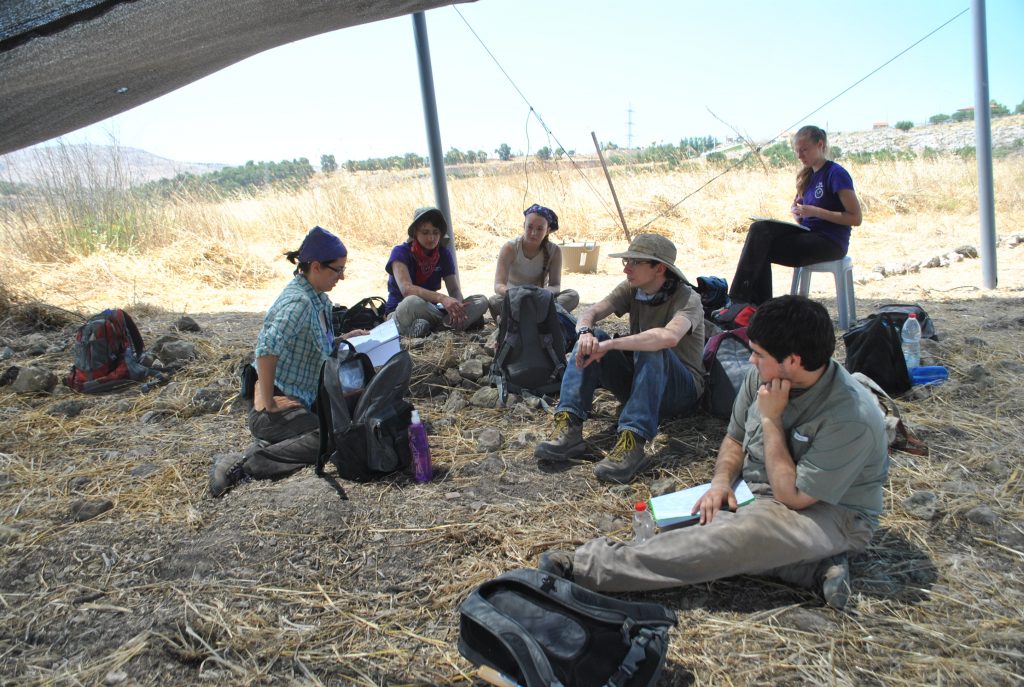
Meeting with the students (Courtesy of the Jezreel Expedition)
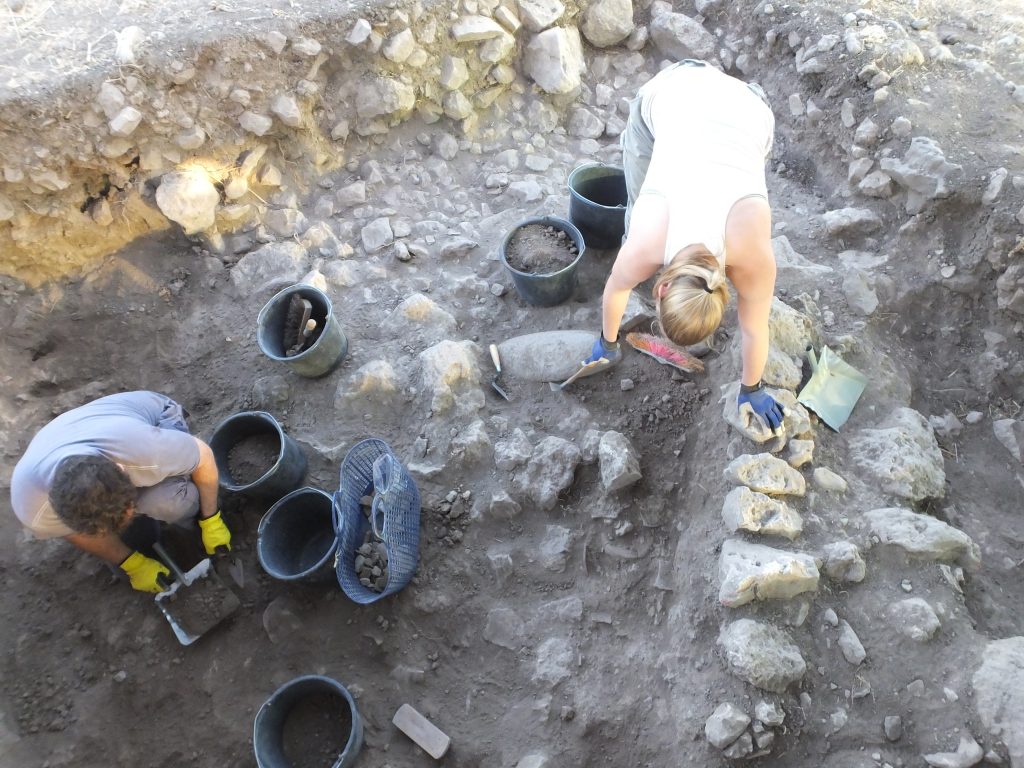
Uncovering the standing stone (Courtesy of the Jezreel Expedition)
I also had the privilege of acting as the Education Coordinator for the Jezreel Expedition’s field school. Students who were participating in the excavation for course credit through the University of Evansville were expected to keep field journals, complete an exam and paper, and attend field trips and a lecture series held during the excavation season. In my position, I monitored their field journals, answered questions, clarified concepts, and assisted in organizing the field trips and the lecture series. For the field trips, we visited an assortment of sites around the country, including the archaeological remains of the 1st century CE town of Magdala, the medieval Old City at Acre (modern Akko), and the Carmelite monastery at El-Muhraqa (the summit of Mount Carmel), the traditional site where the prophet Elijah is said to have challenged the prophets of Baal in a contest of dueling deities (I Kings 18). Note: It did not end well for the prophets of Baal. The lecture series featured a variety of guest speakers, such as Philippe Guillaume, Professor of Hebrew Bible at the University of Bern, Laura Wright, Visiting Assistant Professor of Religion at Luther College, and Karen Covello-Paran of the Israel Antiquities Authority. Topics included Jezreel in the Hebrew Bible, Egyptian and Egyptian-style seals, and ancient wineries in the Jezreel Valley.
My time with the Jezreel Expedition has been an incredible experience, one that would not have been possible this year without the Carol and Eric Meyers Excavation Fellowship. I am deeply grateful to Carol and Eric Meyers for their generous donation to my professional development. I look forward to future excavation seasons and participating in the publication of this remarkable site!
Andrea Creel is a doctoral candidate in the Near Eastern Studies department at the University of California, Berkeley. Her research interests include ritual and religion, materiality, memory, landscape, embodiment, gender, and identity in the Bronze & Iron Age Southern Levant. Her dissertation, “Connectivity on the Edge of Empire: Movement, Liminality, and Ritual in the Southern Levantine Drylands,” will be completed in Spring 2017.
 WELCOME TO THE ASOR BLOG
WELCOME TO THE ASOR BLOG